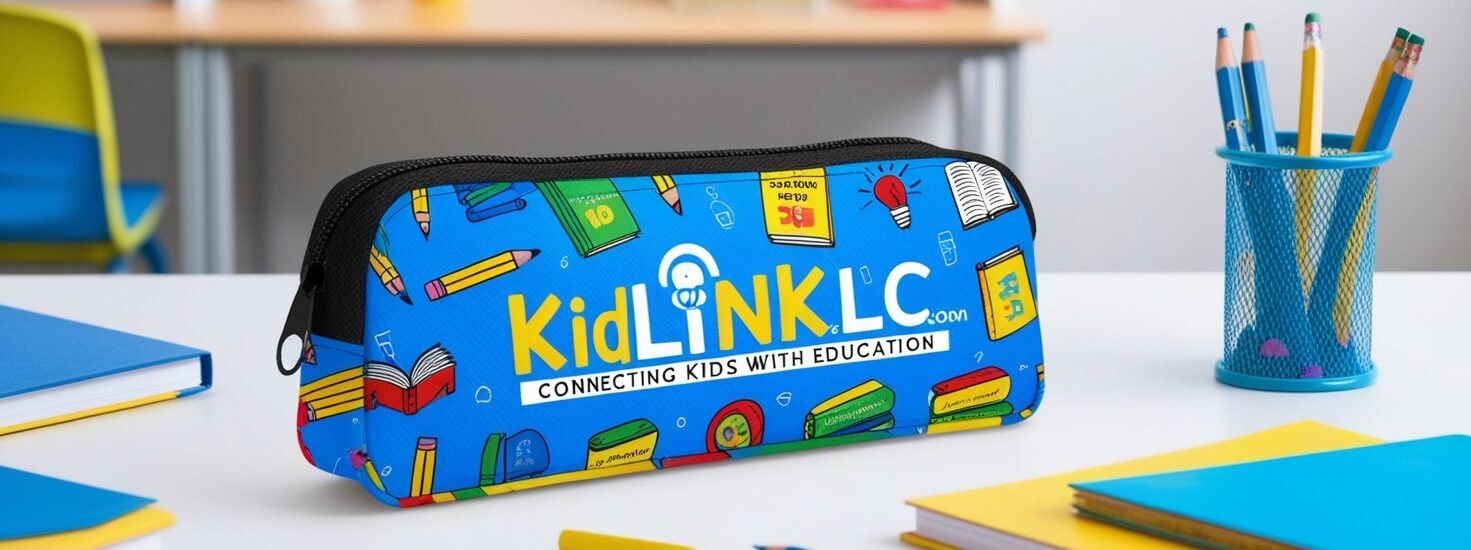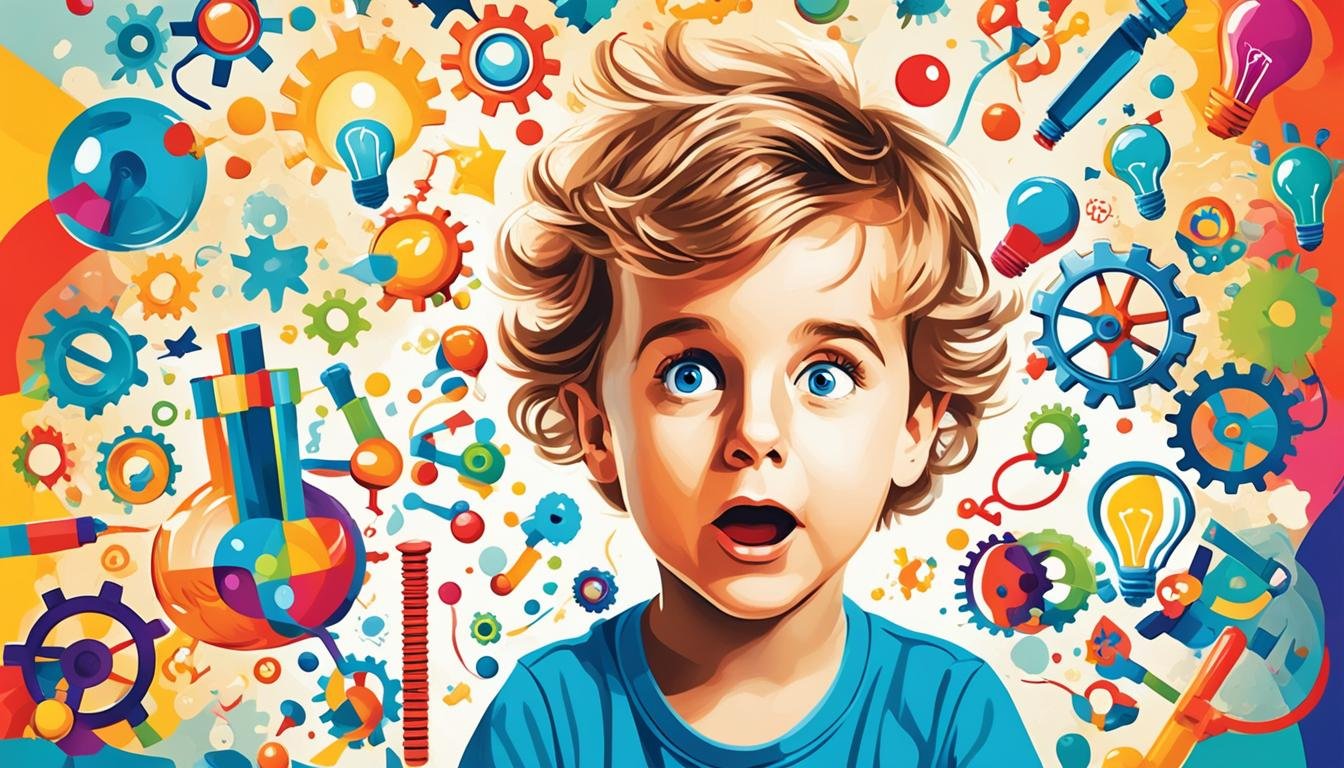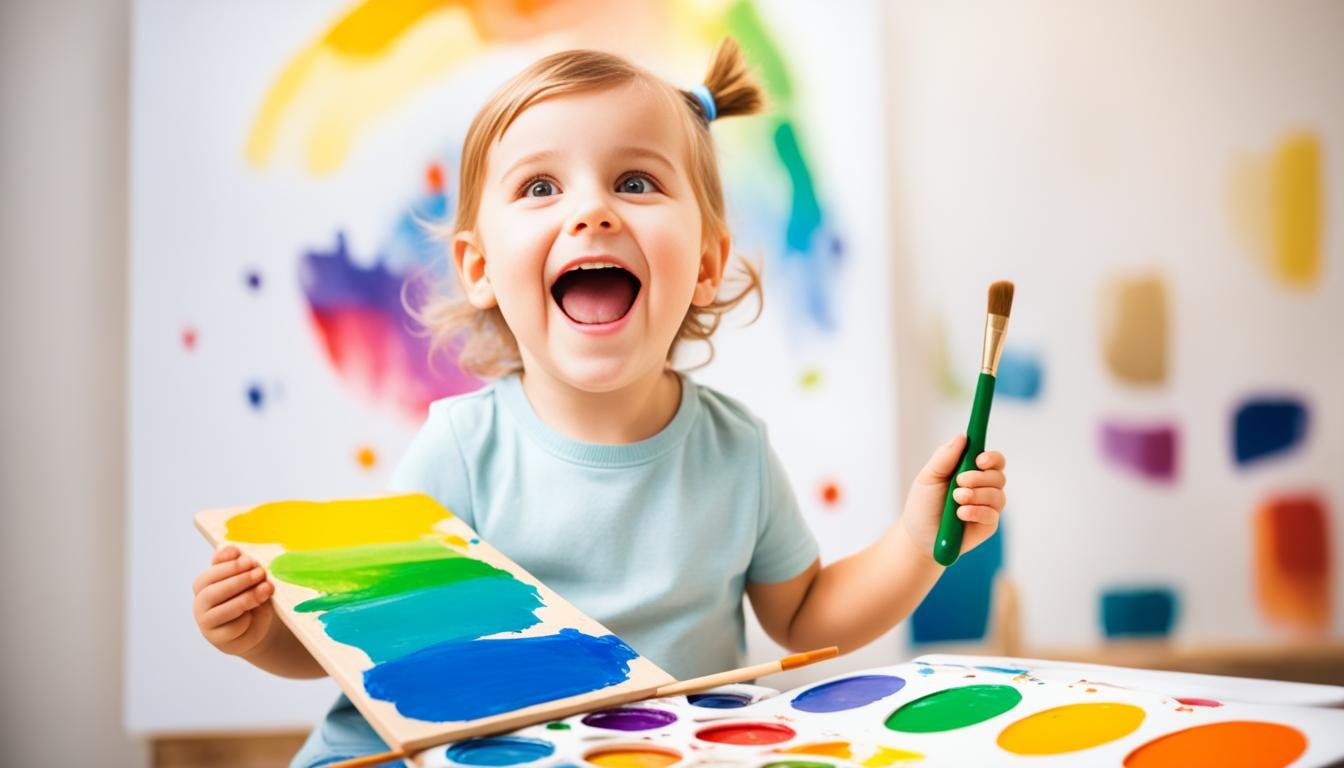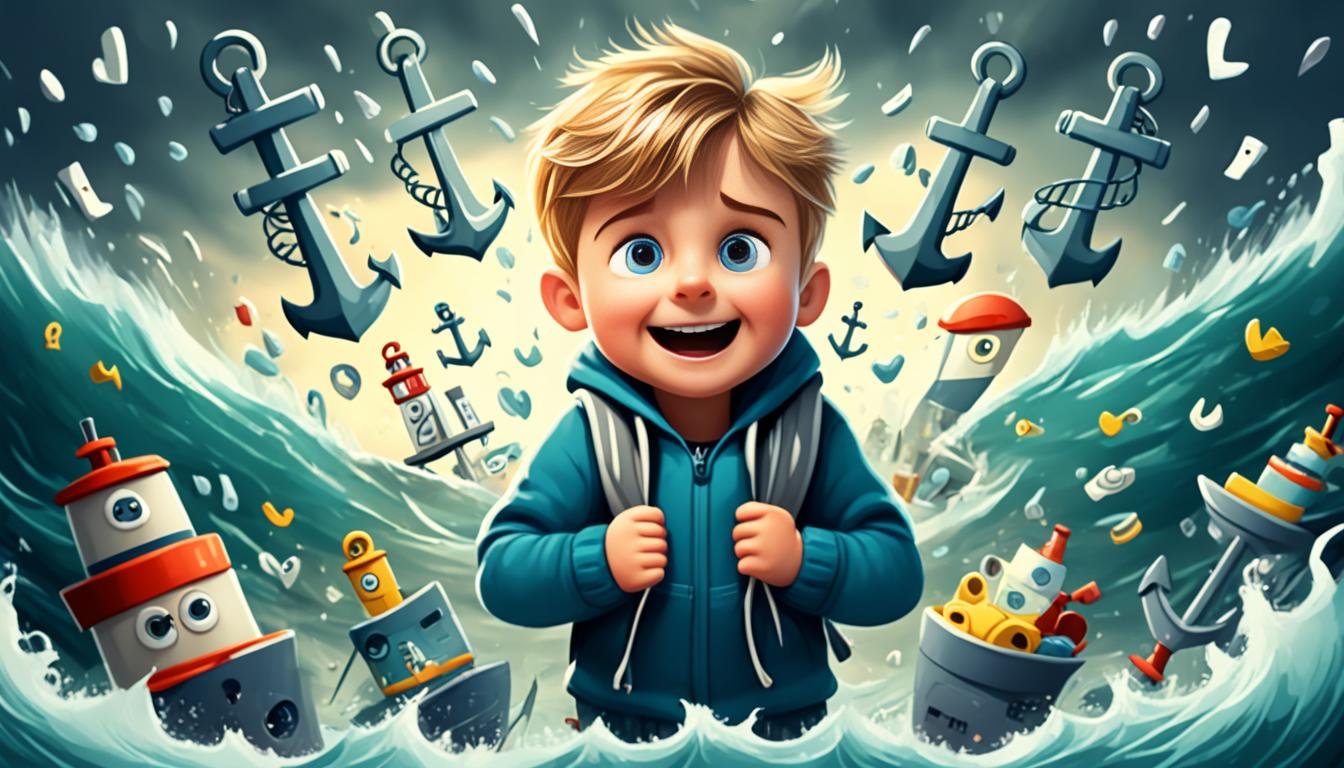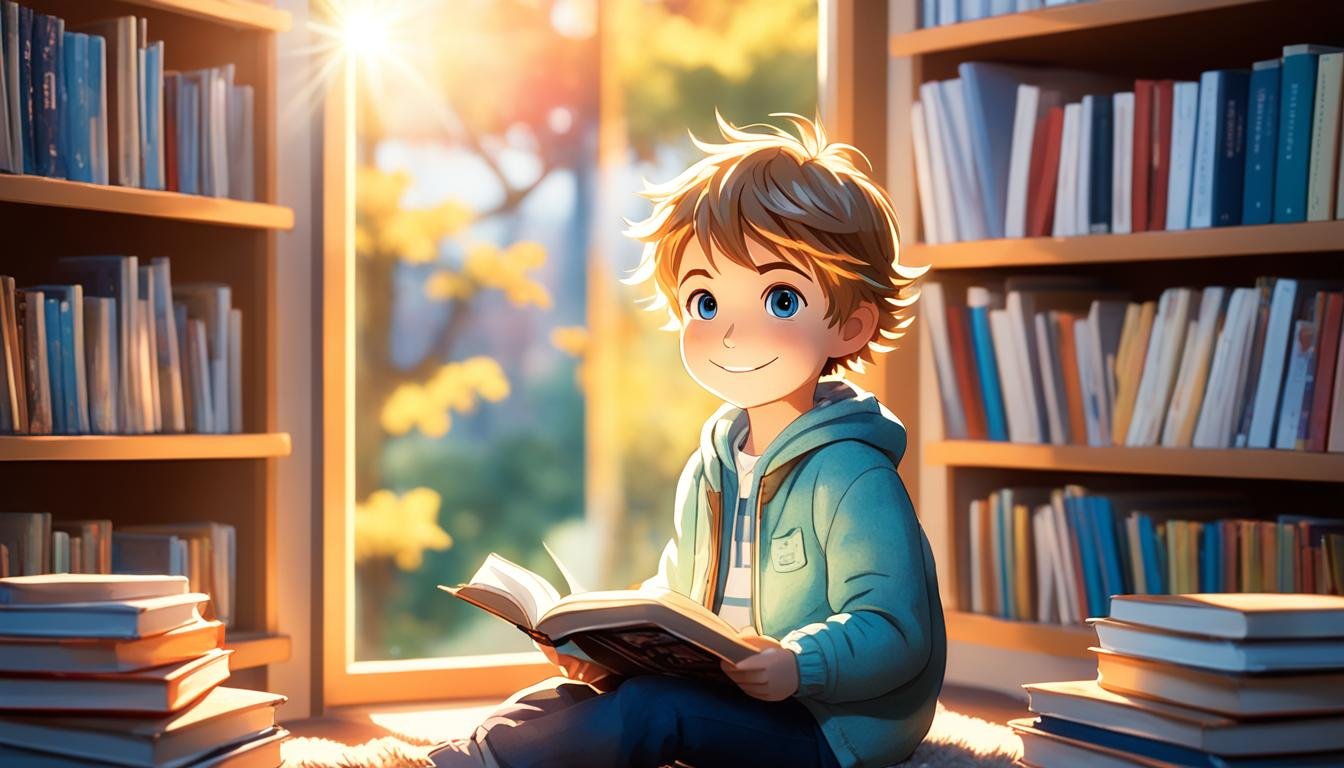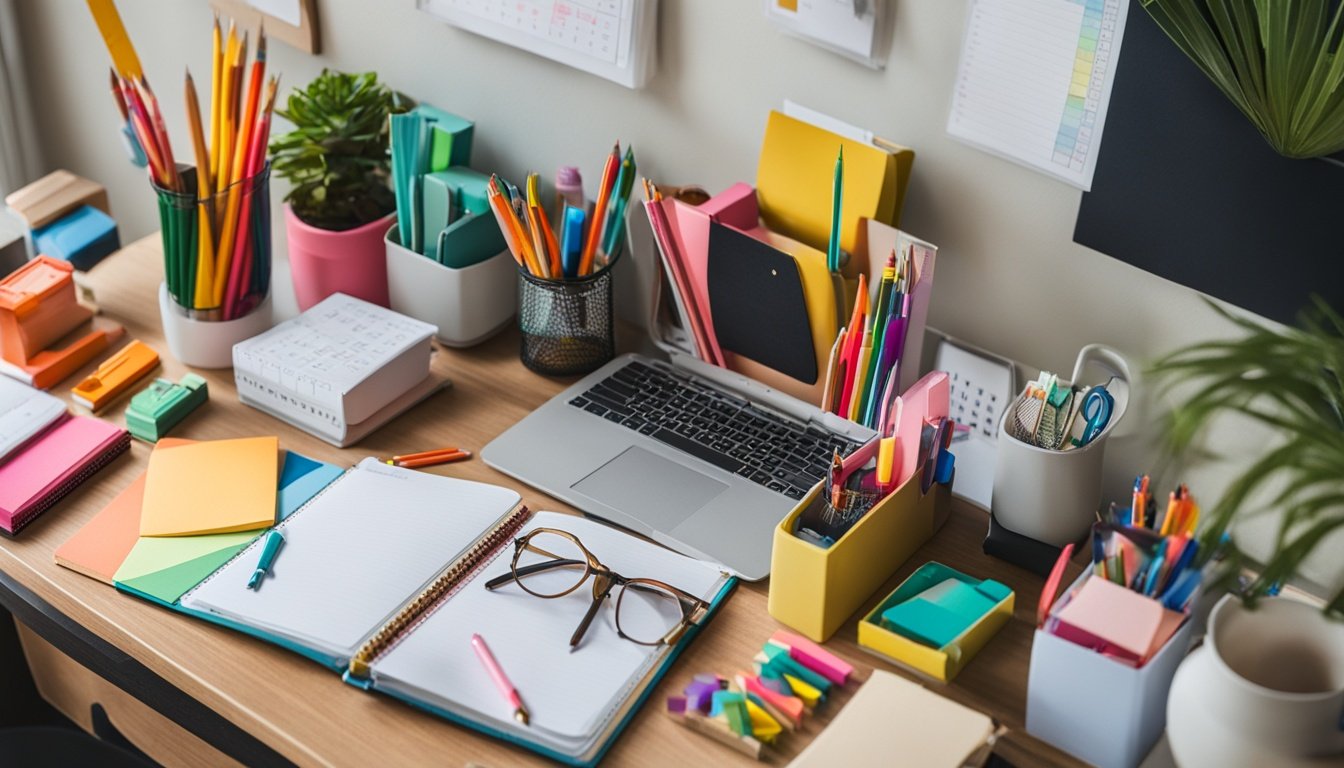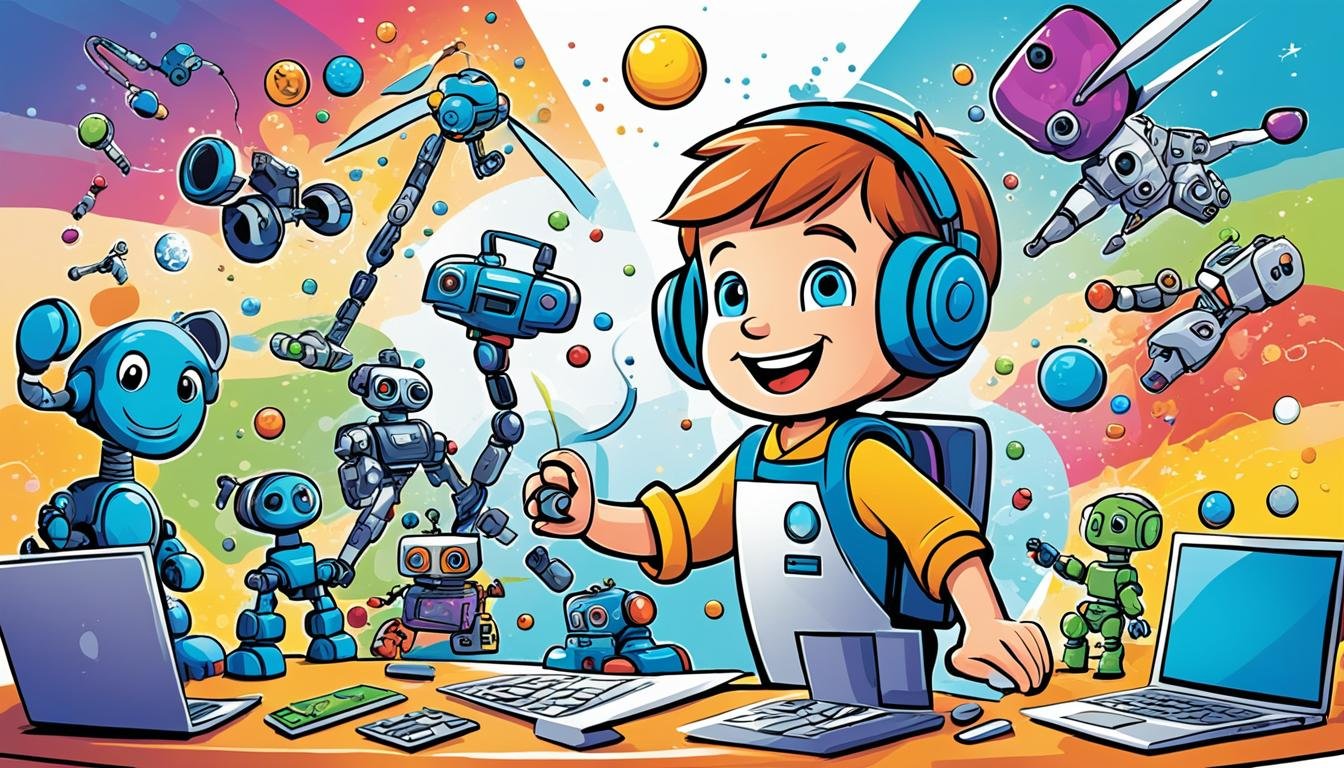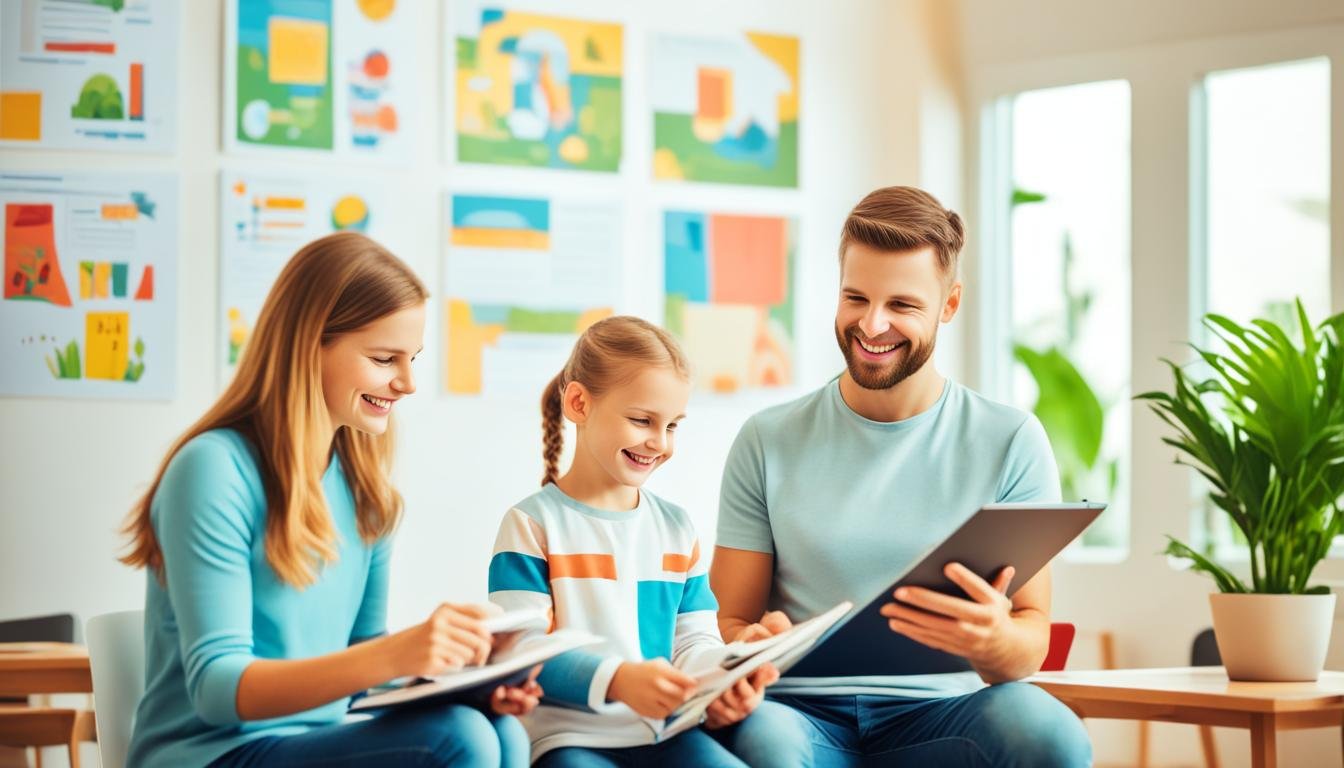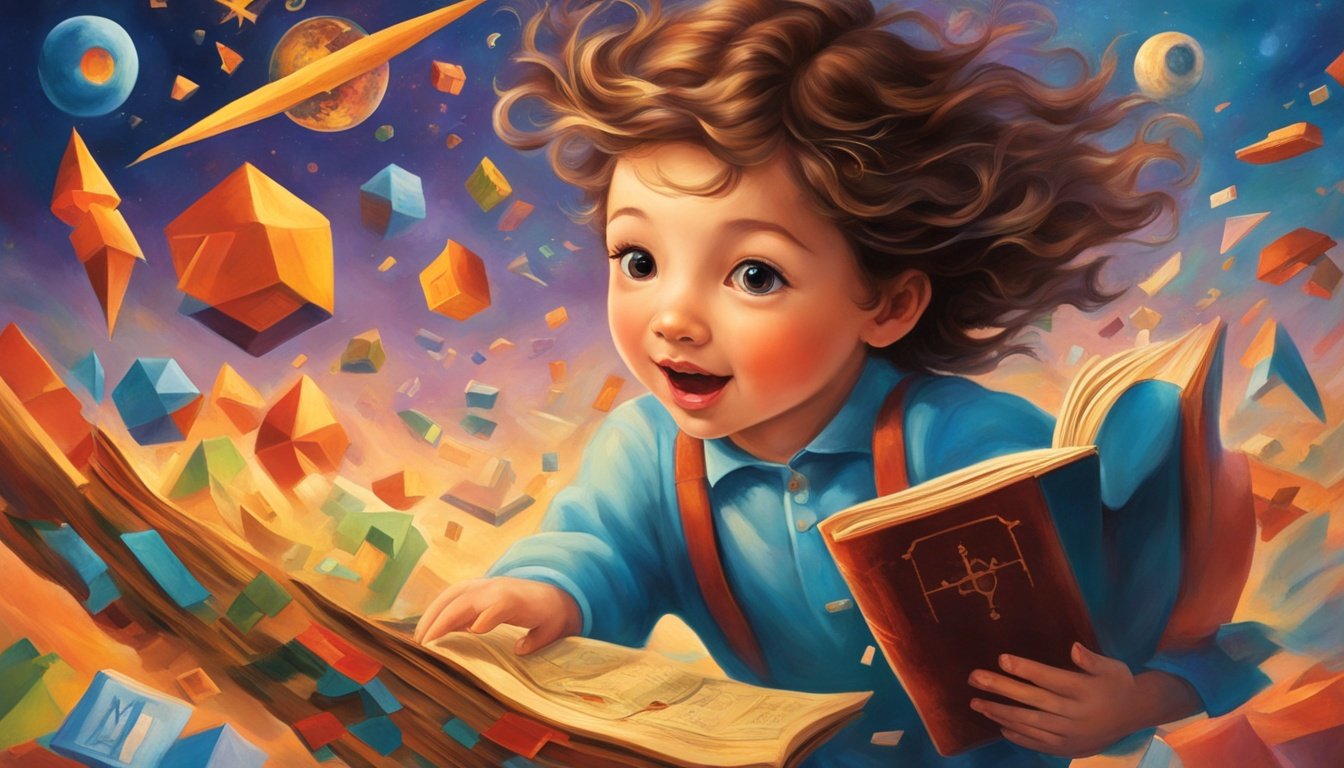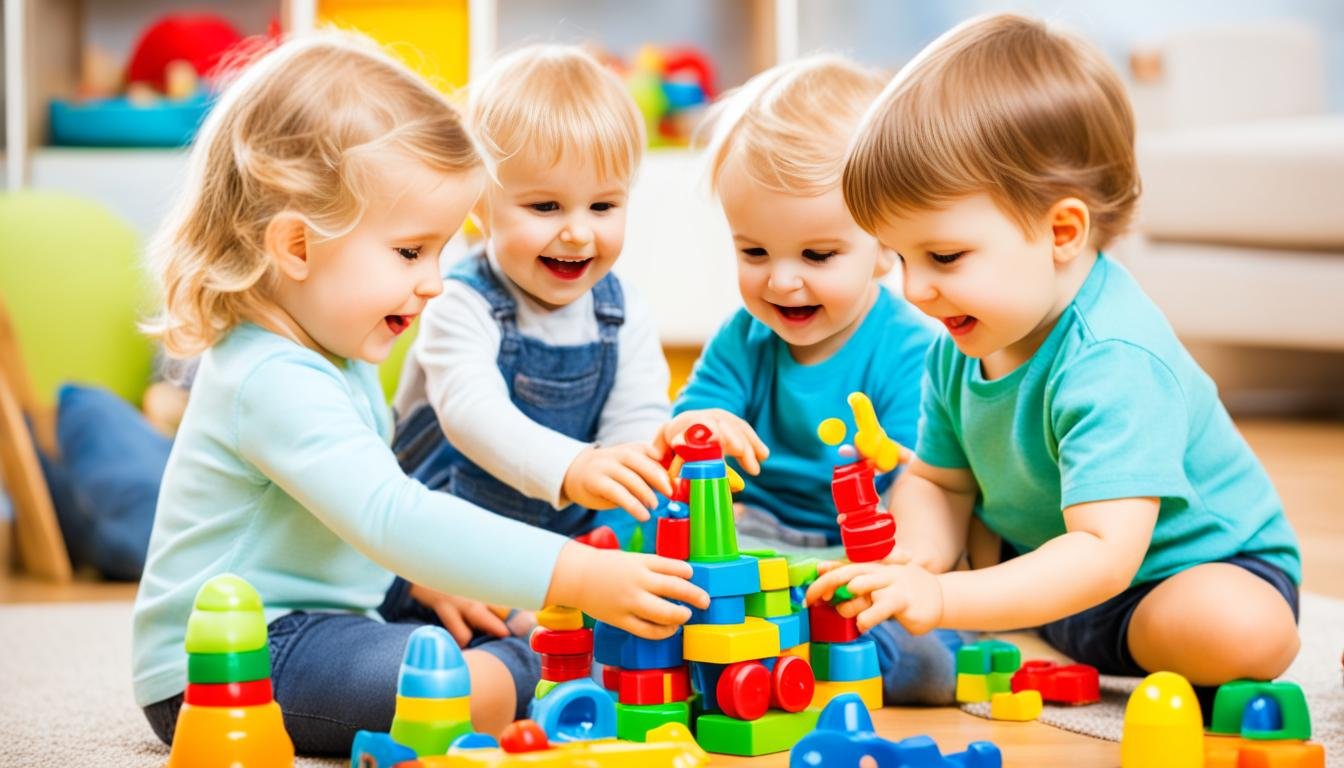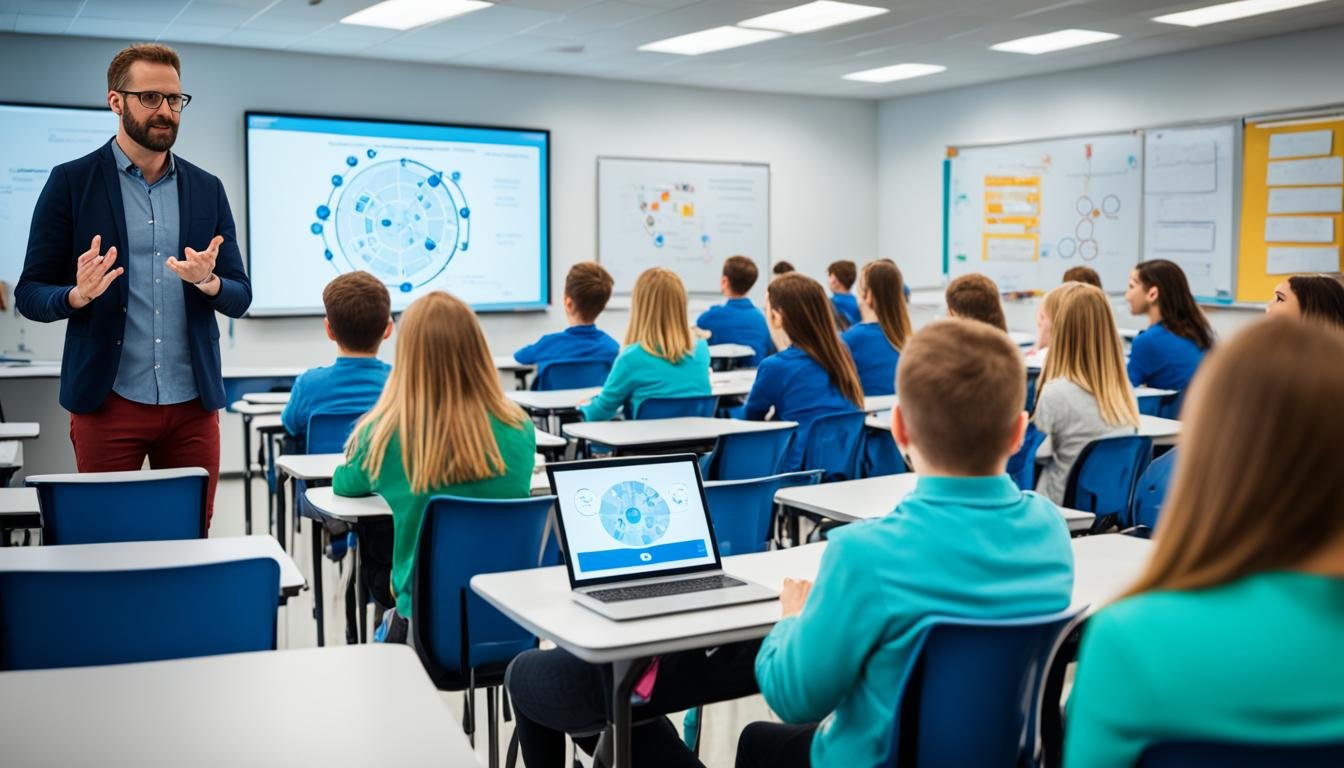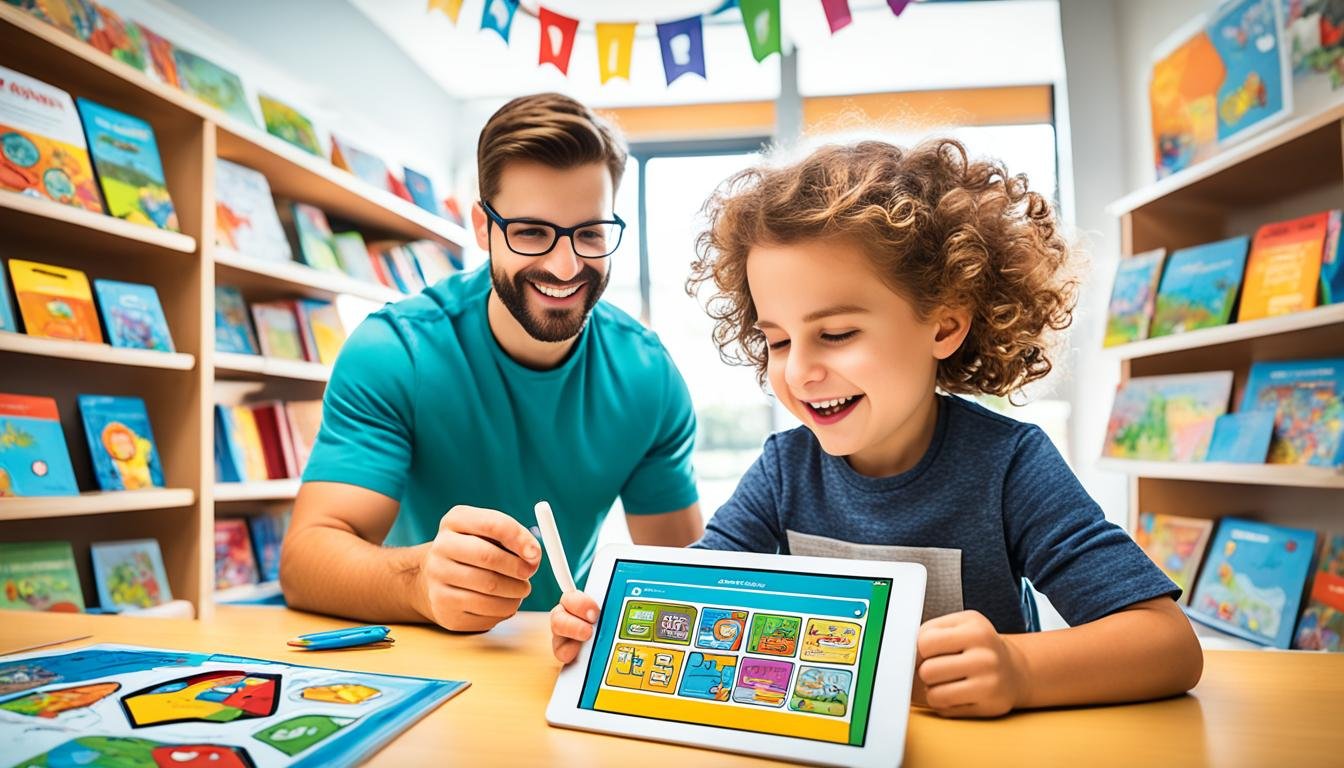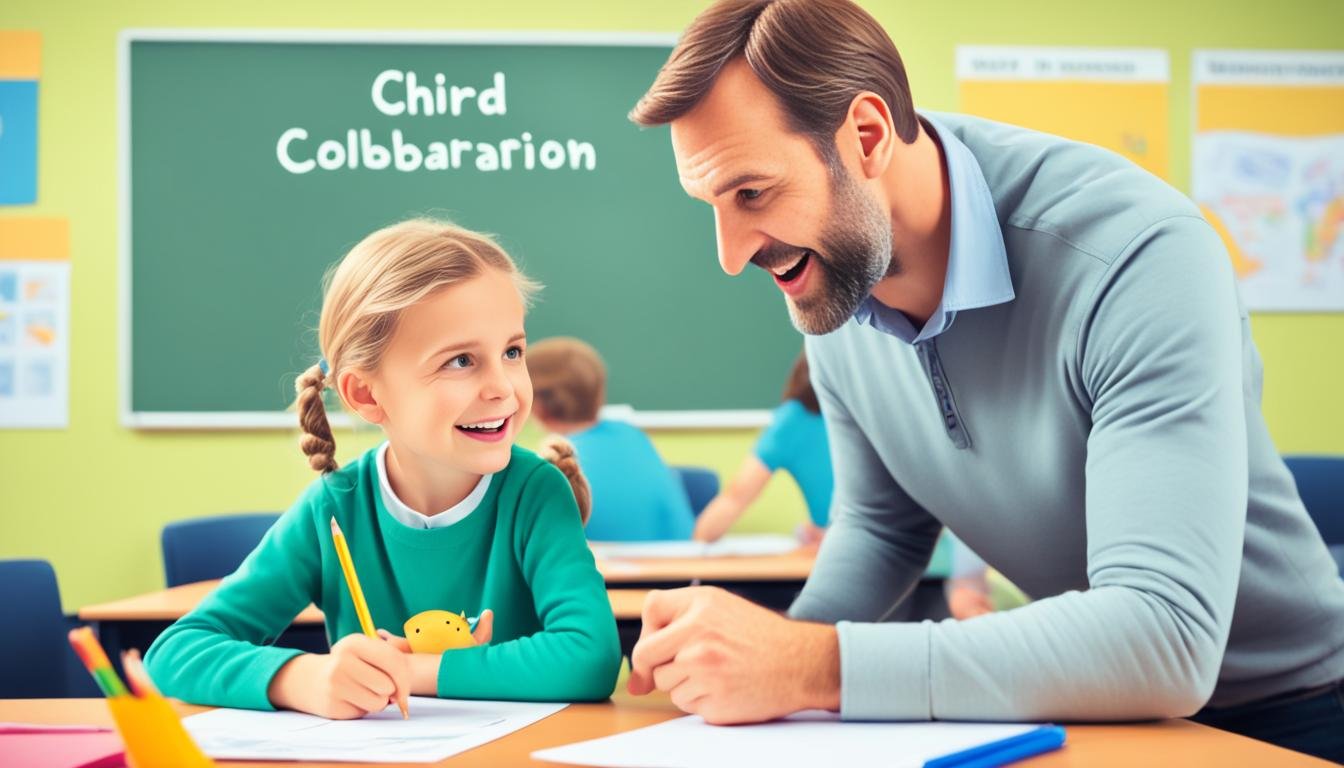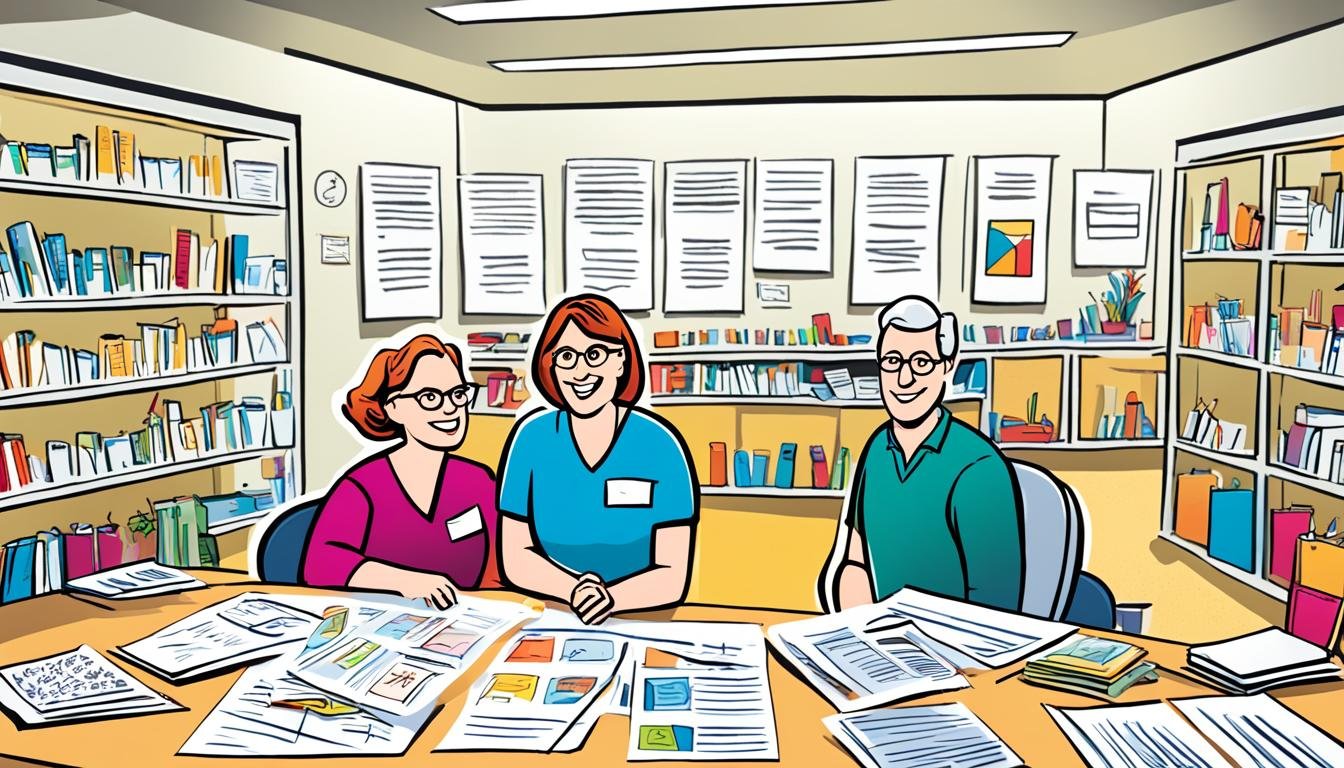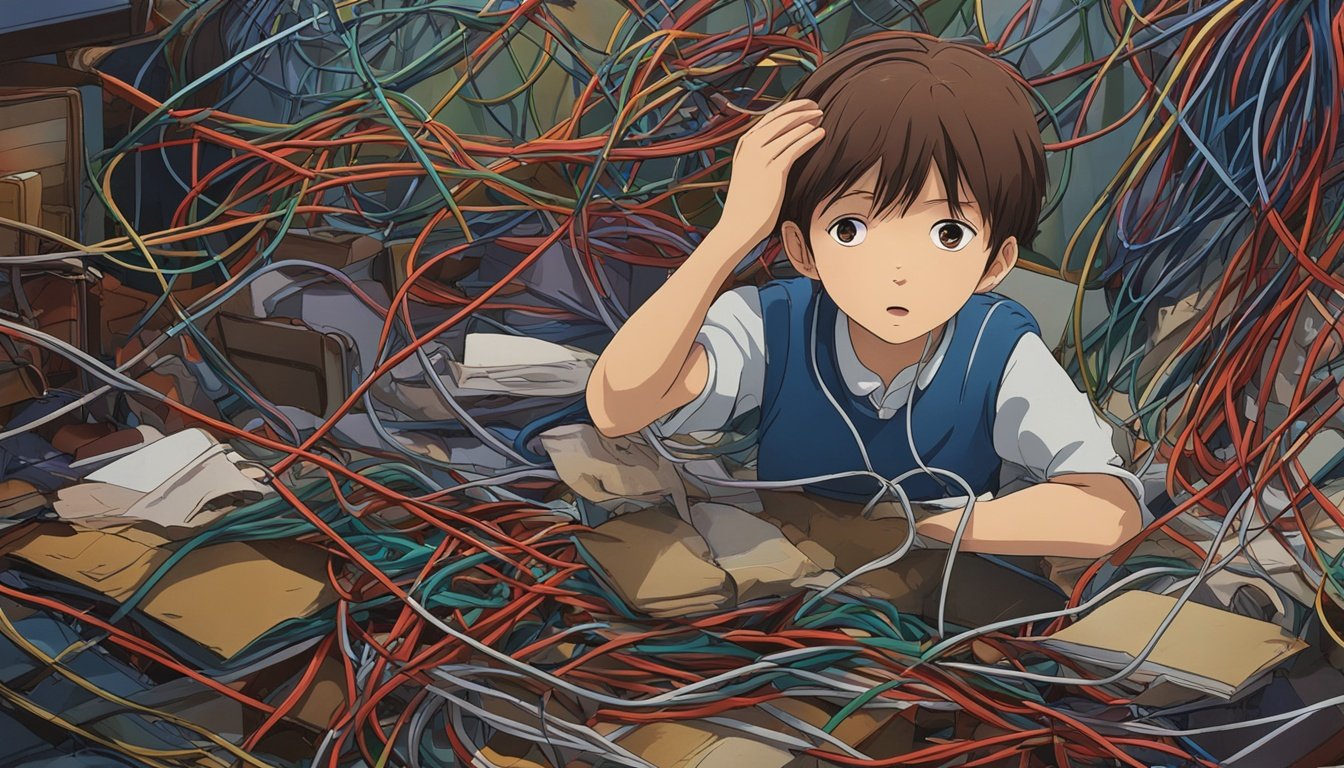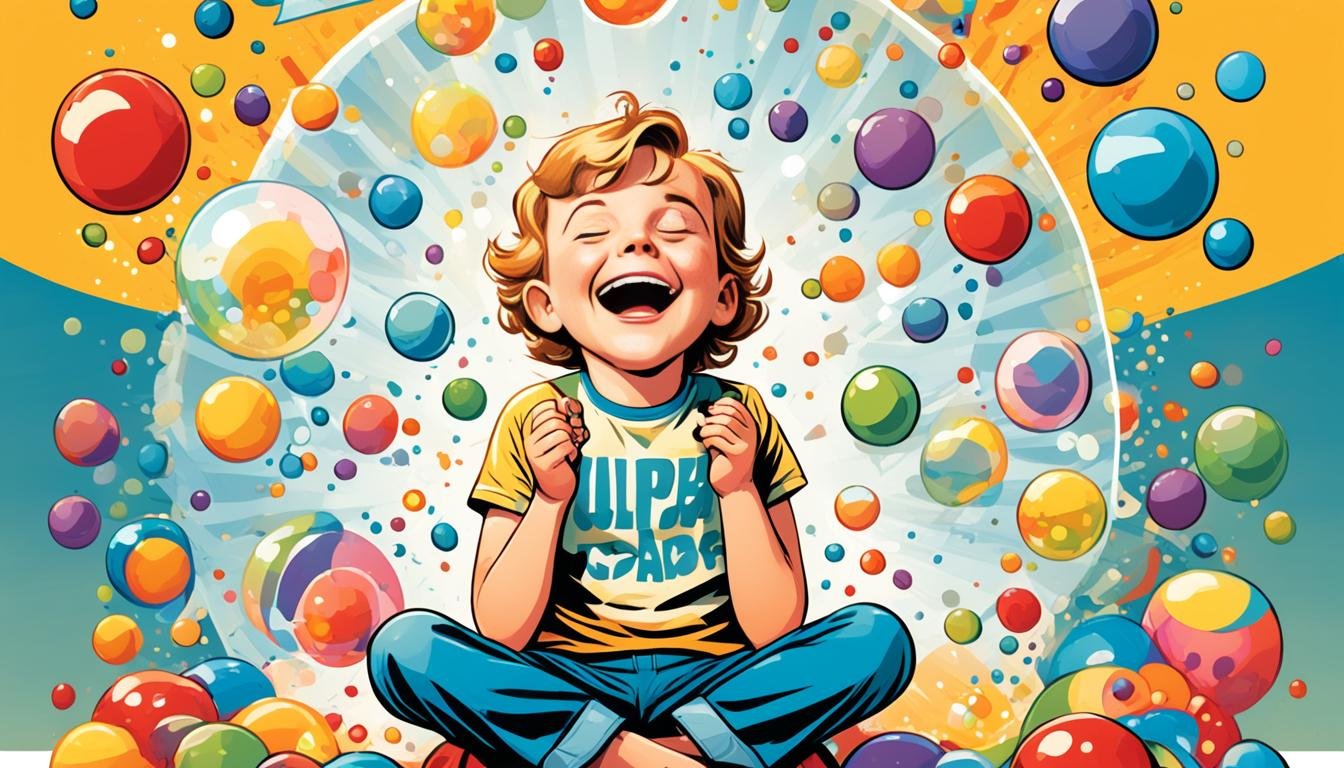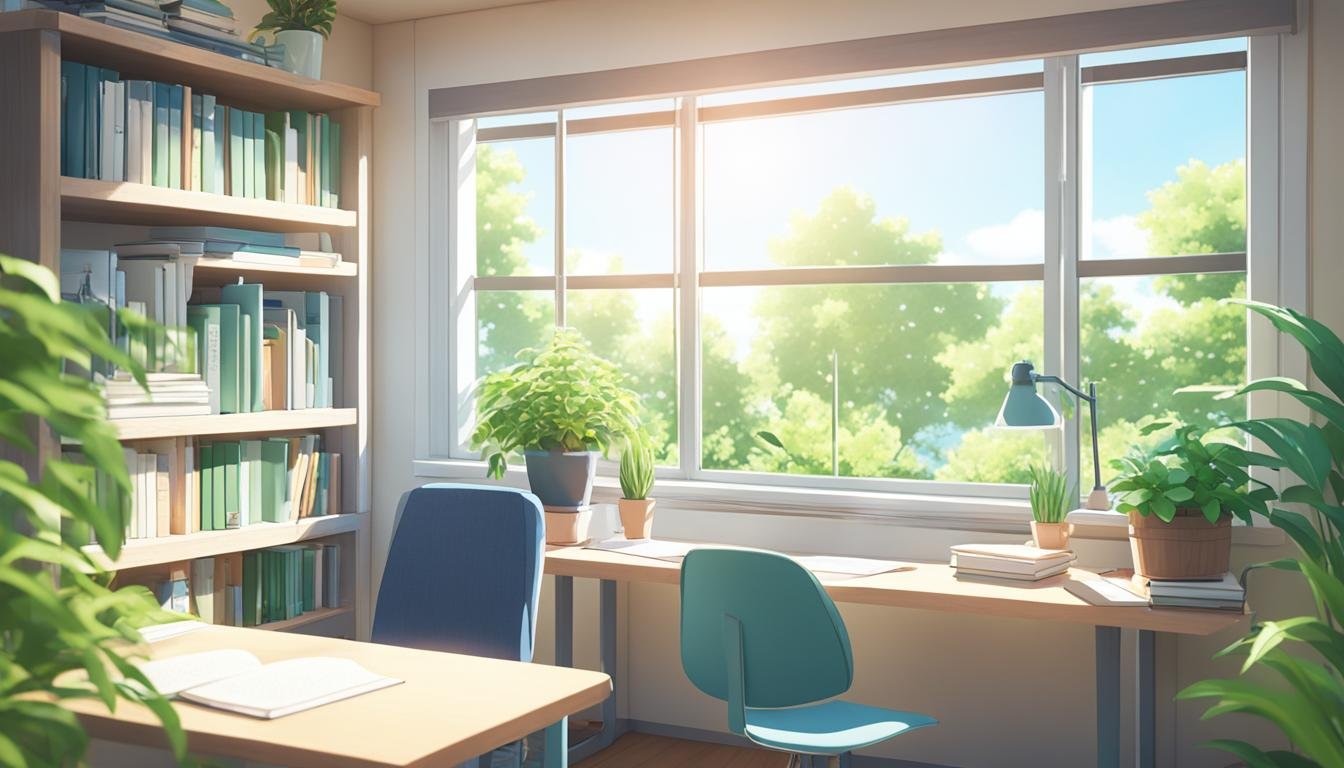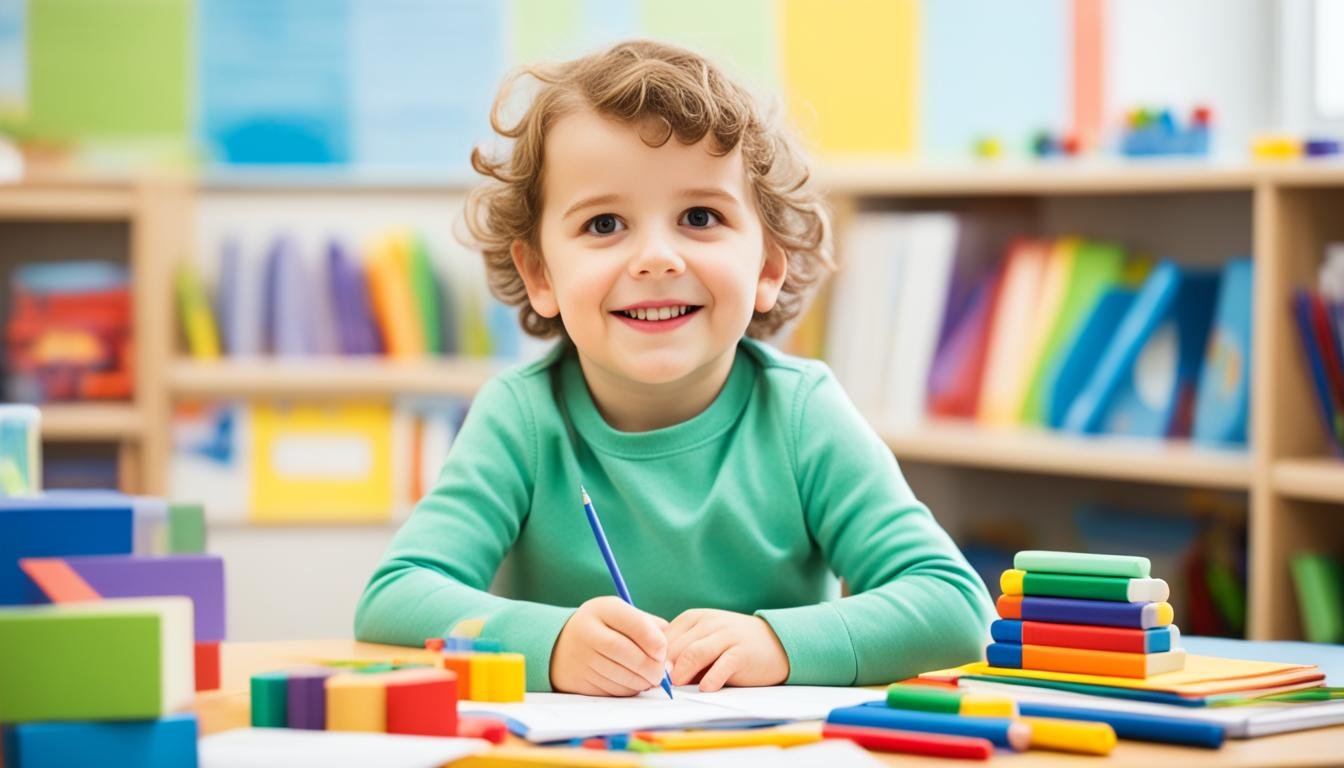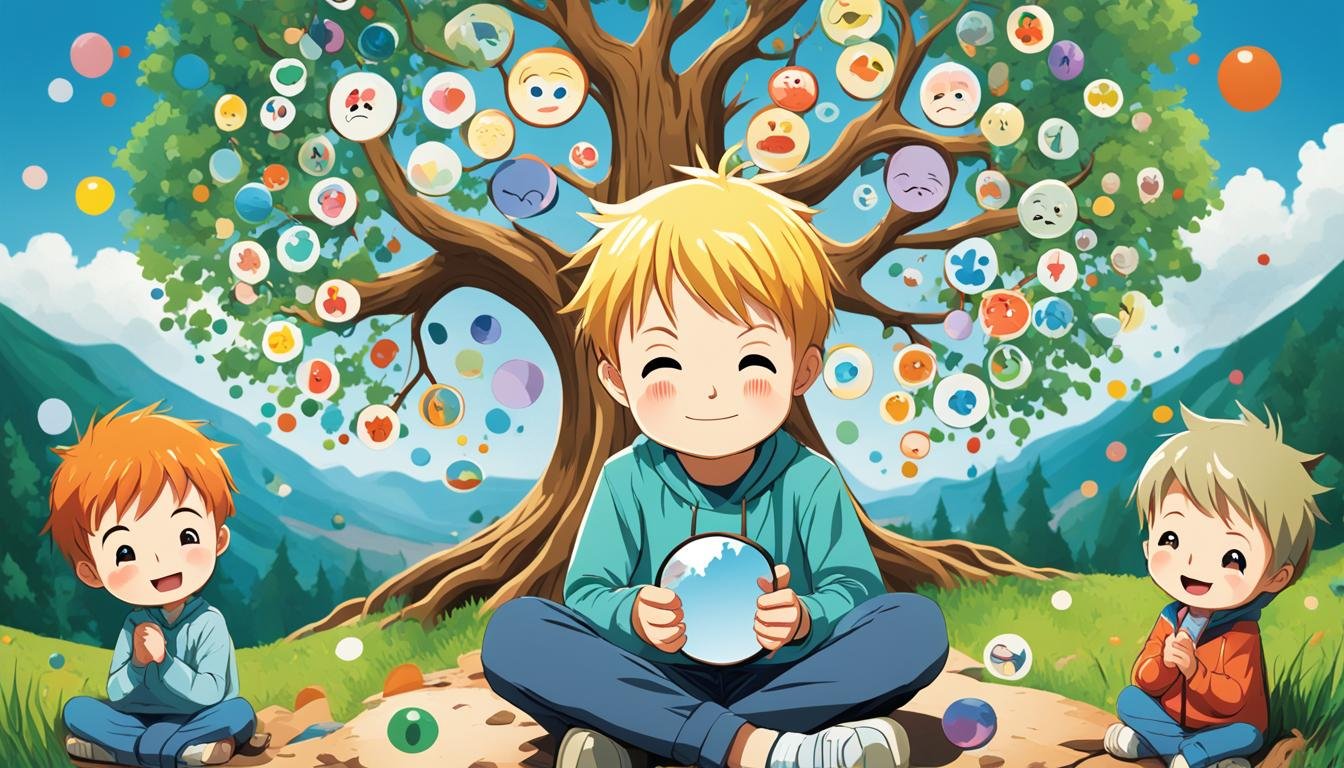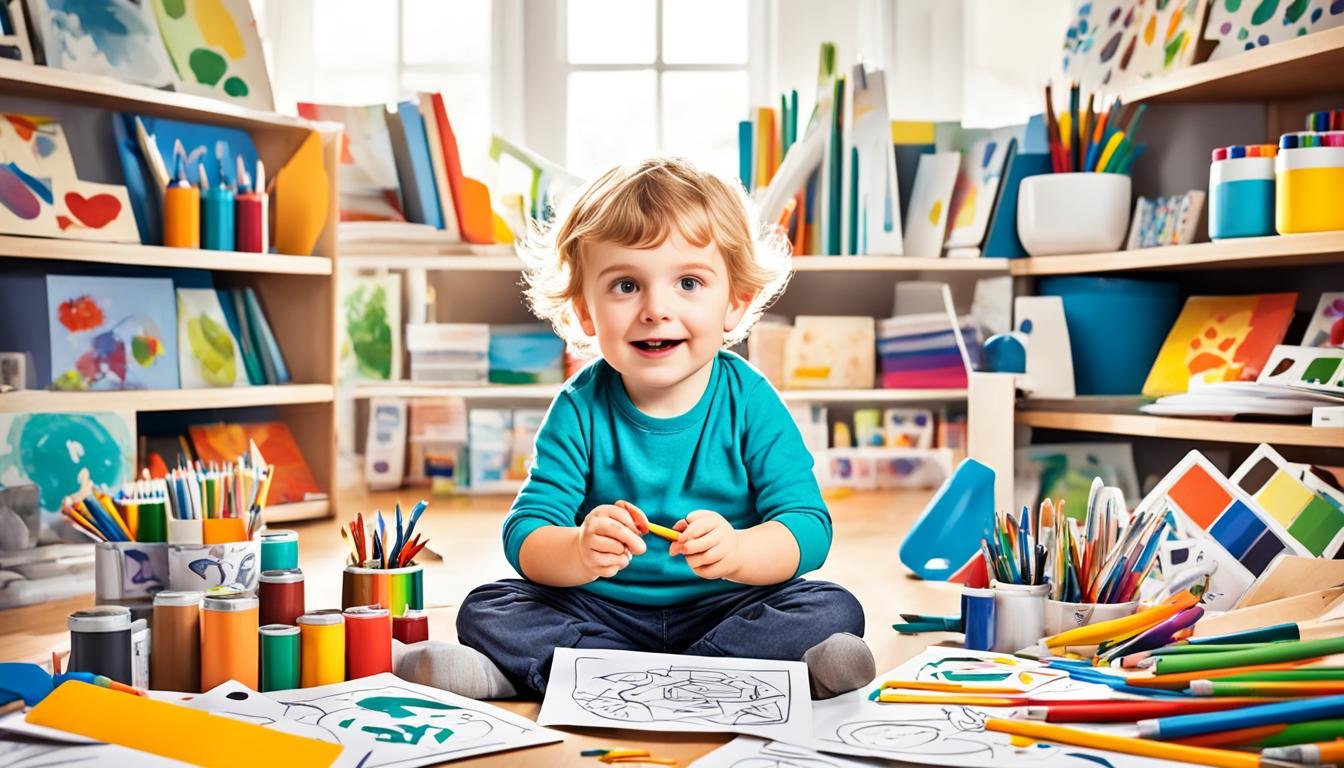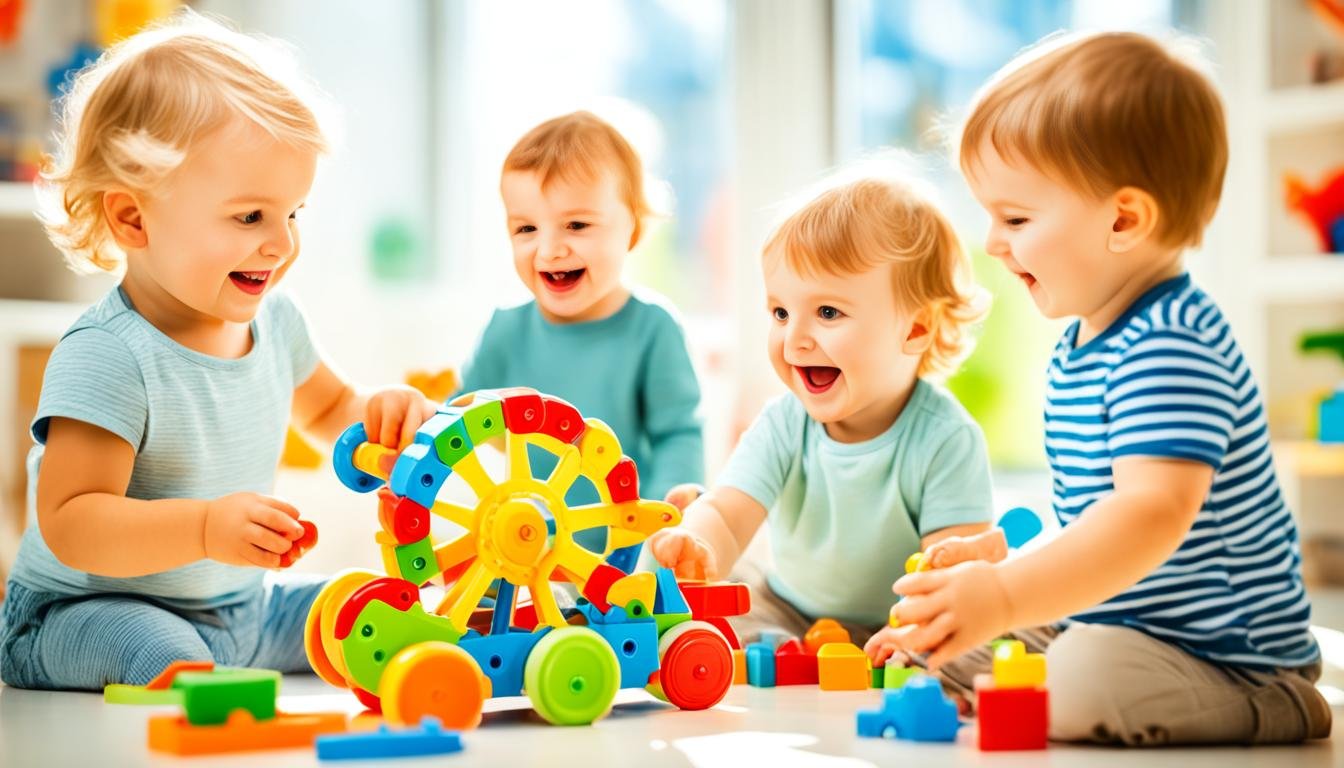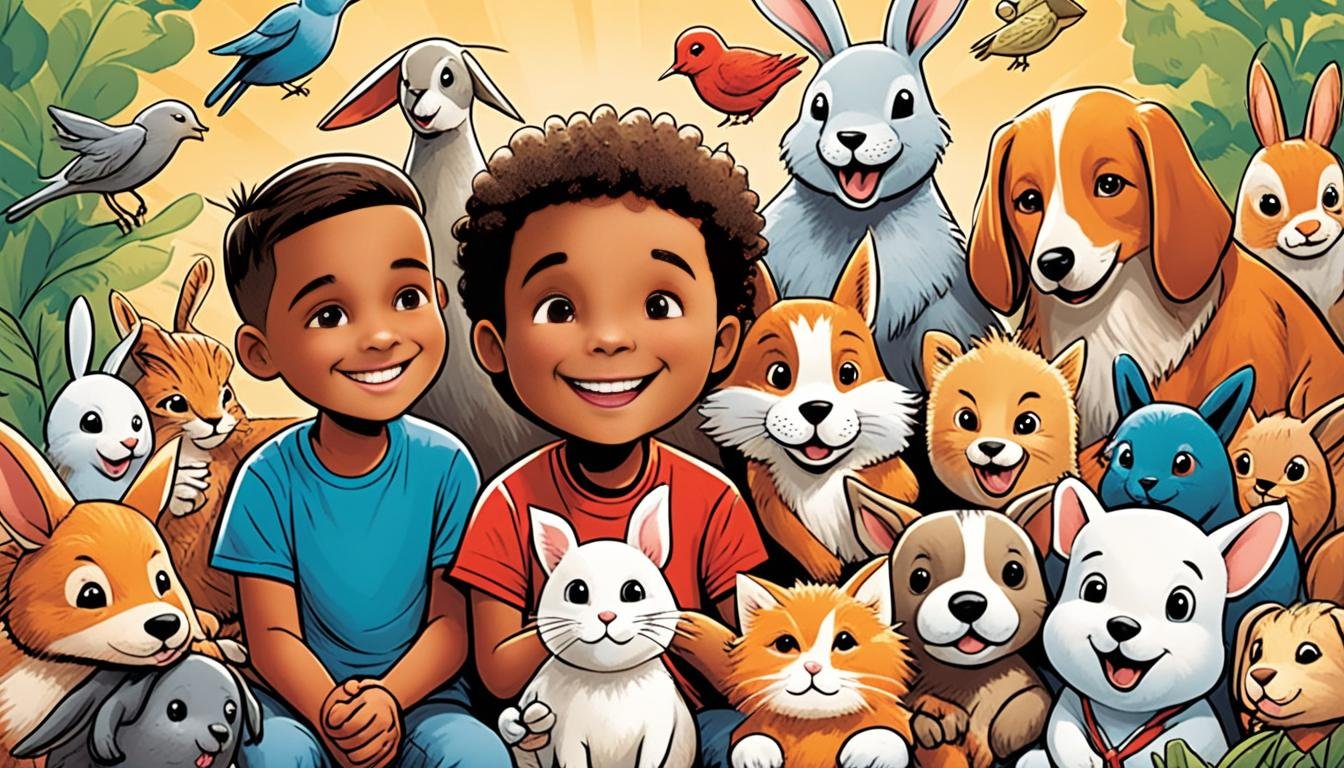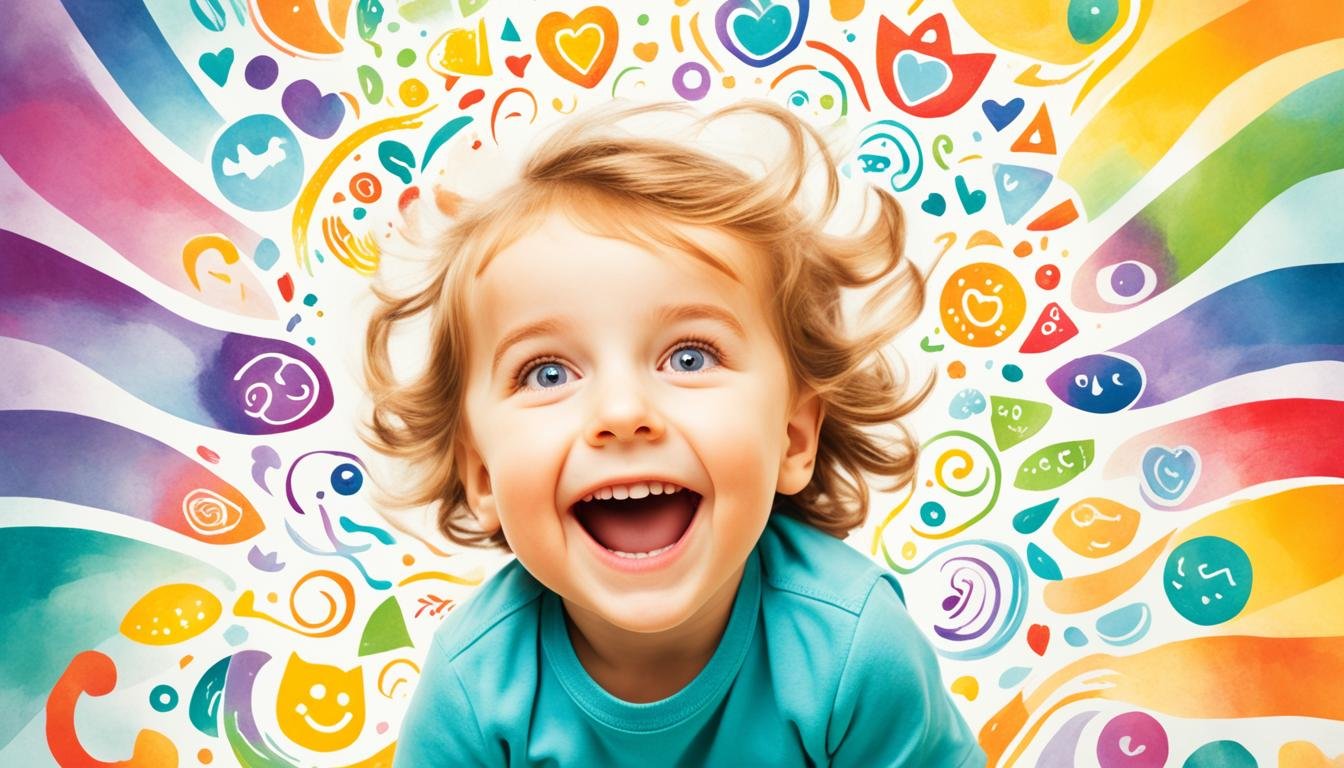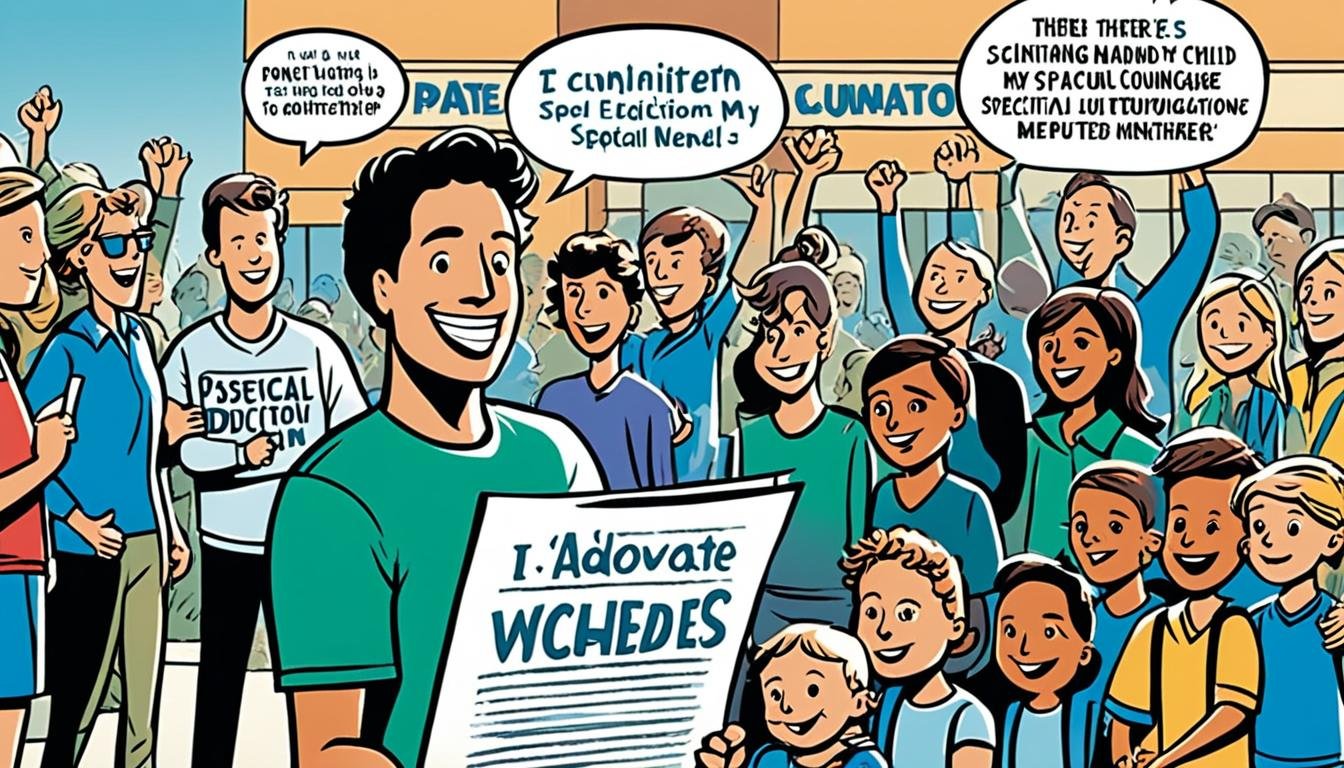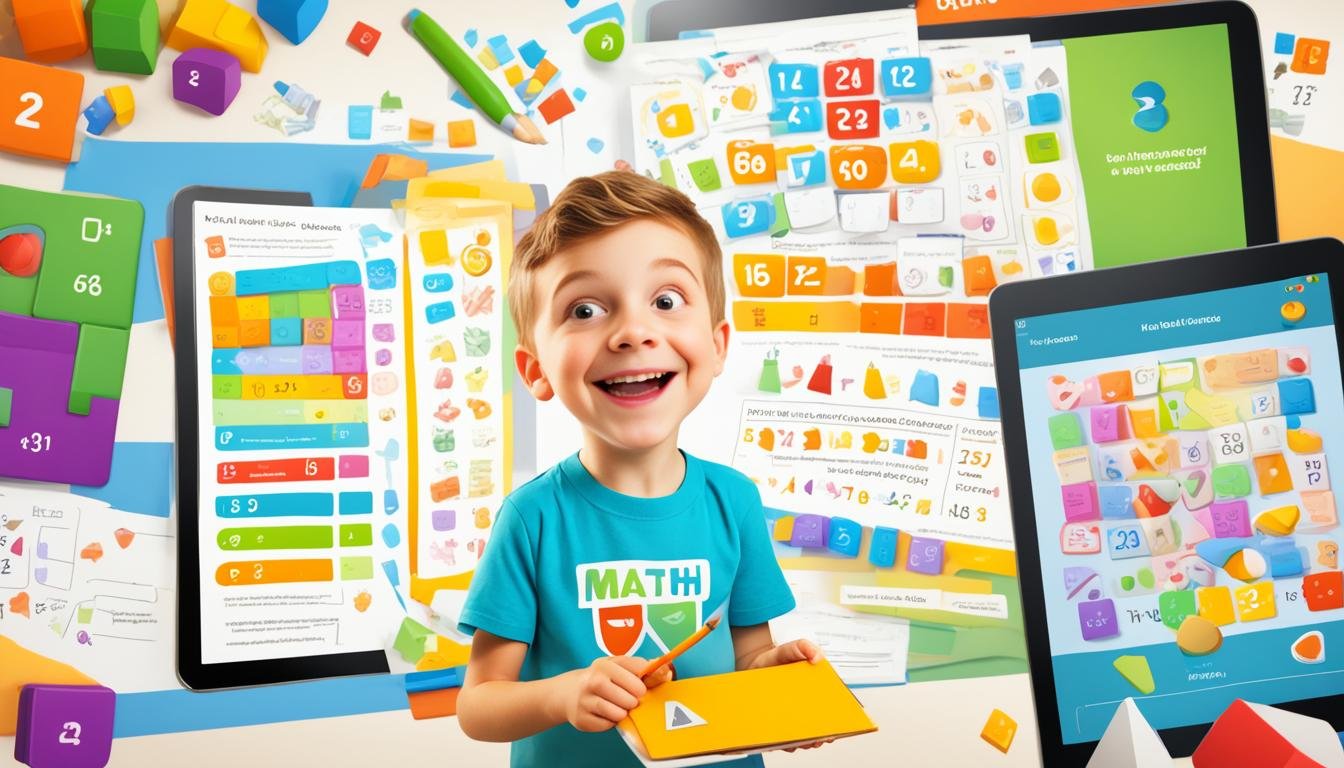What Role Does Creative Expression Play in Problem-Solving Skills for Kids?
“The greatest danger for most of us lies not in setting our aim too high and falling short, but in setting our aim too low and achieving our mark.” Michelangelo’s words highlight our drive for excellence, especially in helping kids grow. Creative expression is key in childhood development. It helps kids find new ways to solve problems that will help them all through life.
Creative expression is more than just a hobby; it’s a base for learning to solve problems. Through play and art, kids learn to face life’s challenges. They develop critical thinking skills that let them overcome obstacles with confidence.
Let’s dive into the world where creativity meets problem-solving. Here, we see how it shapes strong and inventive young minds.
Key Takeaways
- Creative expression boosts problem-solving skills in kids.
- Creative activities help kids develop new ways to solve problems.
- Artistic approaches improve critical thinking and flexibility.
- Kids learn to tackle challenges with creativity as a tool.
- Play boosts both creativity and problem-solving skills.
- Creativity builds resilience and supports lifelong learning.
Understanding Creative Expression
In my journey to understand creative expression, I’ve seen its big impact on solving problems. Creativity brings ideas to life, letting us explore new ways of thinking. It’s all about thinking differently and finding new solutions.
The Essence of Creativity
Grasping creativity means seeing the magic in our imagination. Imagination turns the everyday into something special. By embracing the unknown and taking risks, I open up my mind. This leads to new ideas and innovative solutions.
Different Forms of Creative Expression
Creative expression comes in many ways. Art, music, writing, and play are just a few examples. Each one offers a unique way to share feelings and ideas. By exploring these forms, I learn to think outside the box and solve problems in new ways.
| Forms of Creative Expression | Benefits |
|---|---|
| Art | Enhances visual thinking and emotional communication. |
| Music | Improves cognitive skills and emotional intelligence. |
| Writing | Fosters clarity of thought and storytelling ability. |
| Role-Play | Encourages empathy and understanding of different perspectives. |
| Design | Promotes innovation and critical thinking through tangible outcomes. |
The Importance of Problem-Solving Skills for Kids
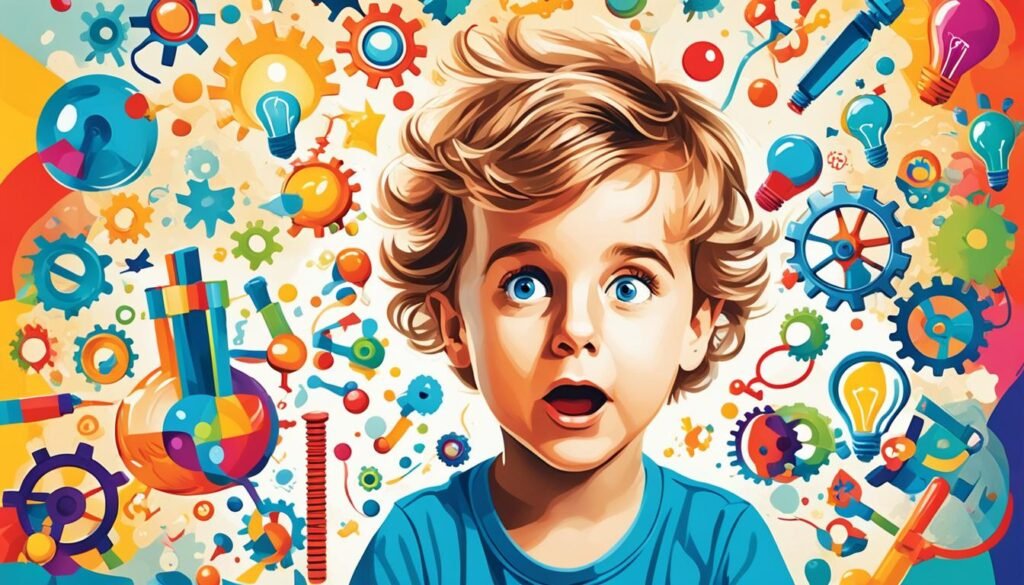
Problem-solving skills are key in childhood development. They help with both school success and personal growth. These skills guide kids through daily challenges. They also build a strong problem-solving mindset that helps them in life.
Building Essential Life Skills
Reflecting on my past, I see how crucial problem-solving skills are. They help develop important life skills. By thinking critically, I can look at situations from different sides.
This helps me find many solutions and make smart choices. It also improves how I get along with others.
Encouraging Critical Thinking
Teaching kids to think critically is key for their future. It makes them curious and keeps them eager to learn. This way, they’re ready to solve problems in school and life.
Places like KidLinkLC.com offer tools to help with these skills. They mix creativity into learning.
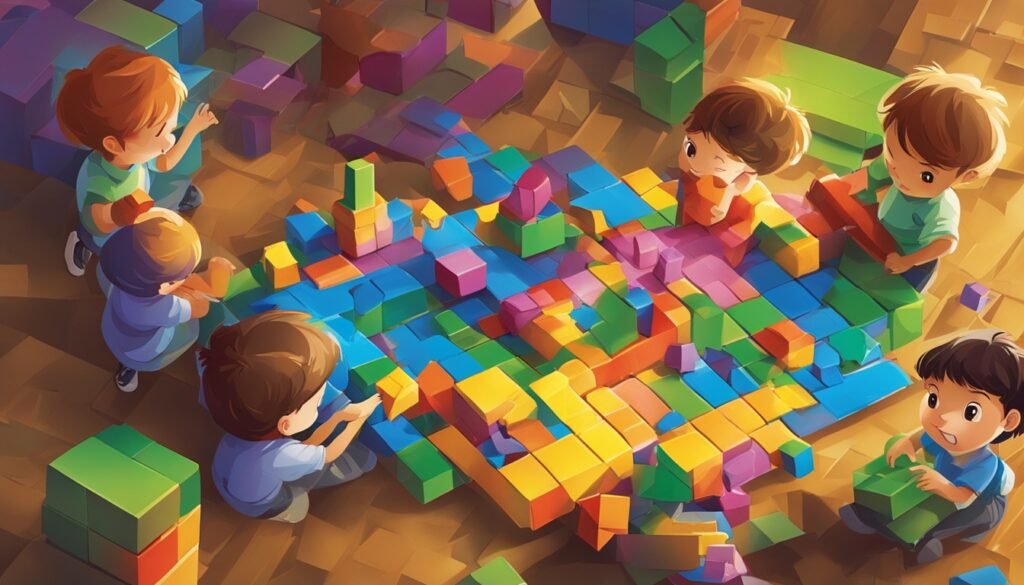
Creative Expression in Problem-Solving
Exploring creativity opens a new world for us. It shows how creative activities in problem-solving can help. These activities let kids use their imagination to solve problems. This mix of creativity and thinking makes innovation thrive.
How Creative Activities Enhance Problem-Solving
Creative experiences teach us a lot about kids. They learn to experiment, work together, and negotiate. This helps them enhance problem-solving with creativity. Kids become better at thinking outside the box and solving problems in new ways.
Case Studies and Examples
Looking at case studies in creative problem-solving shows us a lot. Kids find new solutions when they work on projects they love. For example, a class made a community garden. They learned about nature and solved real problems together.
This shows how working together and being creative can change how we solve problems. Kids become not just problem solvers but also innovators. They grow and learn from each creative experience.
The role of creativity in problem-solving shows how imagination and inquiry can change everything.
The Role of Play in Creative Expression
Play is a key part of childhood, bringing together creativity and problem-solving. Kids go on imaginative journeys through play. This helps them grow their artistic skills and get better at solving problems.
How Play Facilitates Problem-Solving
Play-based learning lets kids face challenges that make them think creatively. They build, create, and try new things in their own worlds. These hands-on activities make them curious and help them find solutions.
They learn important skills like critical thinking and teamwork. This kind of play is crucial for their growth.
Watching kids be so creative makes me see how valuable play is. Play-based learning lets them express themselves and deal with real-life problems safely. It helps them become independent and boosts their social and thinking skills.

Benefits of Creative Expression for Kids
Childhood is full of chances to explore, where every drawing, song, and story matters. This journey boosts kids’ thinking and feelings. It helps them grow in many ways.
Mental Growth and Cognitive Development
Being creative helps kids think better and solve problems. Through art, music, or stories, they learn important skills like:
- Planning and organization
- Evaluation of choices
- Flexible thinking and adaptability
These activities make kids’ minds stronger. They prepare them for learning later on. Every creative act is a step forward in their mental growth.
Emotional Benefits and Confidence Building
Creative activities let kids deal with their feelings. This helps them grow emotionally. Through creativity, they build confidence and show who they are.
Here’s a quick overview of the impact creativity has on children:
| Activity Type | Cognitive Benefits | Emotional Benefits |
|---|---|---|
| Art (Painting, Drawing) | Enhances visual-spatial skills, encourages problem-solving | Facilitates emotional expression, boosts self-esteem |
| Music (Playing Instruments) | Improves memory, enhances cognitive flexibility | Supports emotional regulation, fosters a sense of achievement |
| Storytelling (Writing, Drama) | Boosts language skills, enhances narrative thinking | Encourages empathy, cultivates self-awareness |
Reflecting on these insights, I see how creativity opens up the world for kids. Each child’s journey is special, shaped by the benefits of creative expression.
Problem-Solving Techniques Through Creative Expression
The journey into innovative problem-solving starts with creativity. I live in a world where old limits don’t matter, letting my imagination grow. Kids learn to solve problems creatively through fun activities.
This helps them see life’s challenges in new ways. It also builds their resilience and flexibility.
Innovative Problem-Solving Methods
In my experience, new ways of solving problems make everyday tasks exciting. Kids learn a lot from brainstorming, role-playing, or working together on projects. These activities help them think differently and work well with others.
They also help kids be themselves and learn to solve problems on their own. This boosts their analytical skills.
Engaging in Out-of-the-Box Thinking
Thinking outside the box means being free to try new things. By being creative, kids can look at problems from many angles. This helps them grow their problem-solving skills and feel more confident.
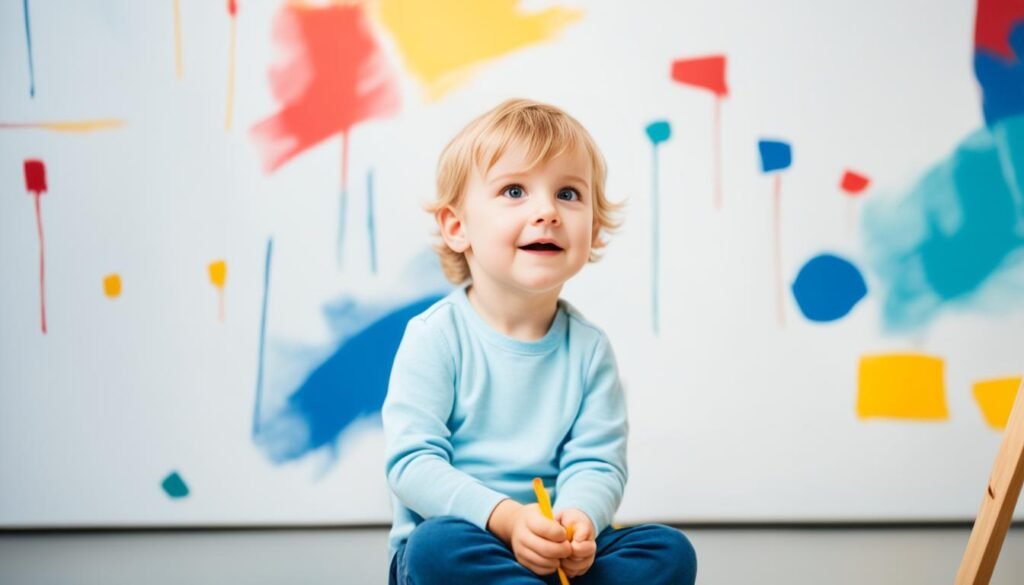
| Technique | Description | Benefits |
|---|---|---|
| Brainstorming | A group activity focusing on generating a multitude of ideas. | Enhances creativity, encourages collaboration, and reduces fear of judgment. |
| Role-Playing | Participants assume different roles to explore scenarios. | Promotes empathy, reinforces understanding of diverse perspectives. |
| Collaborative Projects | Working together towards a common goal, often across different disciplines. | Builds teamwork skills, encourages communication, and enhances innovative thought. |
These techniques make problem-solving fun and inspiring. They help shape the next leaders who can face challenges with style. My work combines creativity and strategy. It lets kids explore a world full of possibilities.
Artistic Problem-Solving Approaches
When I think of artistic problem-solving, I imagine vibrant canvases and creative minds at work. Artistic mediums offer a magical way to tackle challenges. They inspire kids to use their imagination and learn important skills. Through art, kids connect deeply and think innovatively.
Incorporating Various Artistic Mediums
Art forms like painting, sculpture, and theater are key in improving problem-solving skills. Each one offers a new way to look at things. For example, collaborative mural painting turns a wall into a place for sharing ideas and solving problems together. It builds teamwork and helps kids understand how to solve problems as a group.
Examples of Artistic Problem-Solving Activities
Many activities show how art helps solve problems. Making sculptures from recycled stuff is one way to be creative and think about the environment. Kids talk and learn as they shape their art, gaining insights into environmental issues.
Below is a table showing different art activities for solving problems, with their benefits:
| Activity | Art Medium | Benefits |
|---|---|---|
| Collaborative Mural Painting | Paint | Teamwork, communication, and creativity |
| Sculpting with Recycled Materials | Mixed Media | Environmental awareness, innovation, and hands-on exploration |
| Theater Improv Exercises | Performing Arts | Adaptability, quick thinking, and confidence |
These art activities are more than just fun. They’re ways to learn and grow. Every brushstroke, structure, and performance opens up new possibilities. I believe this approach is key to raising a generation of thinkers and creators.
Encouraging a Problem-Solving Mindset in Kids
I believe it’s crucial to help children develop a problem-solving mindset. By making a space that values creativity, I let them use their imagination and find their potential. This kind of space helps them become independent and start their own discovery journeys.
Creating an Environment for Creativity
To boost fostering creativity, I set up spaces that make kids curious and innovative. I give them different materials for hands-on tasks and tools that spark their interest. With these resources, kids take charge of their learning. They face challenges, change their plans, and learn how to solve problems.
Fostering Independence and Exploration
Letting kids explore on their own makes them strong. They can do this through art, science, or play. This helps them become resilient and resourceful. It also makes them feel like they own their projects, making them think deeply and creatively.
Activities that let kids make choices boost their confidence. They learn to tackle problems head-on. Tools that help them plan their projects are especially useful. For instance, using creative strategies can make learning even better.
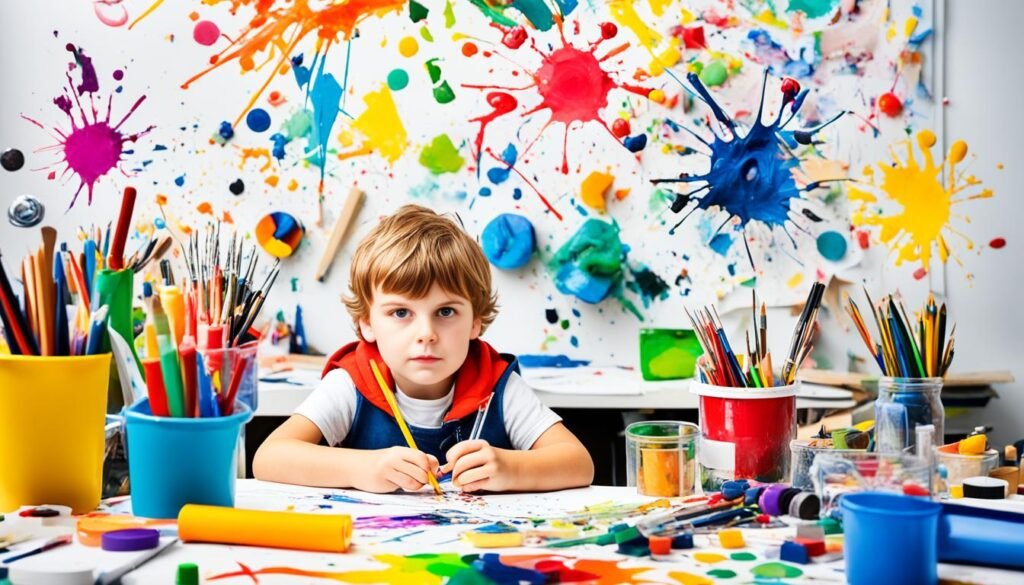
| Aspect | Description |
|---|---|
| Environment | Space rich in materials and opportunities for creative activities. |
| Independence | Encouraging children to make choices and explore concepts on their terms. |
| Problem-Solving | Engaging in activities that present challenges requiring thought and innovation. |
| Creativity | Utilizing open-ended tasks to stimulate imagination and expressive skills. |
By combining these elements, I create a space that supports a problem-solving mindset. This prepares kids to face their futures with confidence and creativity.
Creative Problem-Solving Strategies for Educators
As an educator, I love when creativity meets problem-solving in class. Adding creativity to education not only keeps students engaged but also builds skills they’ll use forever. By making lesson plans that encourage exploration and imagination, I help students see the value of teamwork and collaboration.
Integrating Creativity into Lesson Plans
I make sure to add creative problem-solving strategies to my lessons. Starting with projects gets students involved and makes them curious. Activities like the “Wonder Wall” let students share their questions, leading to deep discussions and better learning.
This approach is all about giving students many ways to be creative and supporting their ideas. It’s about making a place where they can grow and think freely.
Collaborative Learning and Team Projects
Using collaborative learning techniques turns the classroom into a place where students learn from each other. Team projects make them work together to solve real problems. Getting feedback from peers builds respect and helps everyone get better at thinking and talking.
In this setting, students don’t just celebrate wins. They see failures as chances to get better. For more tips on making your classroom more creative and problem-solving friendly, check out this resource: encouraging creativity and problem-solving.
Parental Involvement in Enhancing Creativity
Thinking about creativity in childhood, I see how much I can help my child. Being involved in my child’s creative life is key. It helps them grow in many ways. By supporting their creative efforts, I help them solve problems better.
Supporting Creative Activities at Home
Creating a home full of creative chances helps my child explore and try new things. Simple things like arts and crafts, telling stories, or making DIY science projects can spark their imagination. Every drawing or unique project shows they’re growing in critical thinking and resilience.
Promoting a Growth Mindset
It’s important to teach my child that making mistakes is a part of learning. When I say mistakes are okay, they’re more open to challenges. This way, they see problems as chances to learn and grow, not just obstacles.
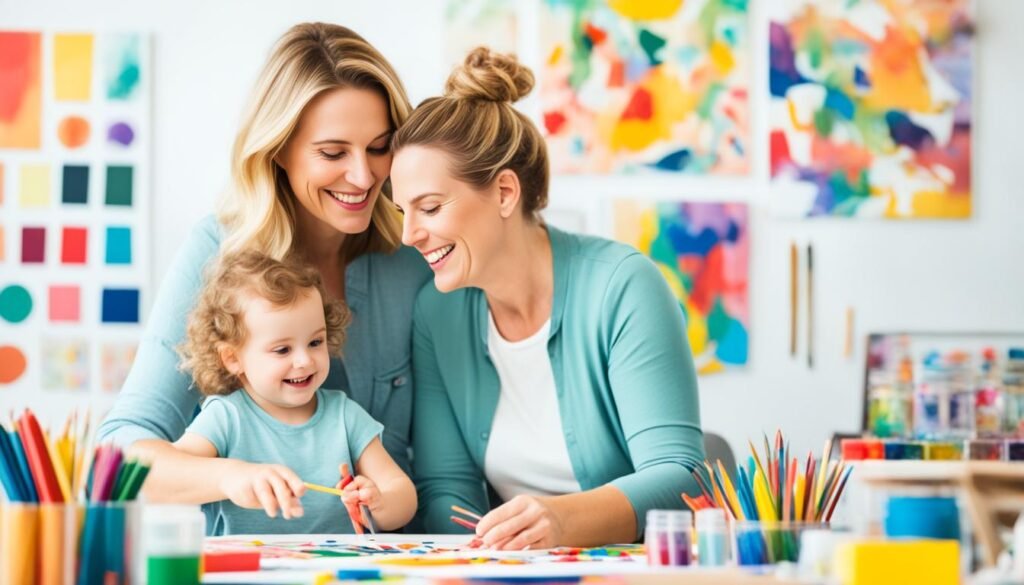
| Creative Activity | Benefits | Growth Mindset Contributions |
|---|---|---|
| Arts and Crafts | Enhances fine motor skills, encourages self-expression | Learning from mistakes and artistic evolution |
| Storytelling | Boosts language skills and imagination | Overcoming narrative challenges increases resilience |
| Outdoor Exploration | Encourages curiosity and appreciation of nature | Facing uncertainties fosters adaptability |
By being actively involved and encouraging, I create a space for creativity to flourish. As my child develops a growth mindset, our creative journey becomes an exciting adventure. It’s full of discovery and learning together.
Assessing problem-solving skills Through Creative Expression
Helping young minds grow means looking at their problem-solving skills through creative activities. These activities show how creative and problem-solving they are. By watching how they interact and solve problems, I learn how to help them grow.
Measuring Growth and Development
Every creative project shows how a child is doing. I look at certain things to see how creative they’re getting:
- Engagement: How much does the child get into the activity?
- Innovation: Are they coming up with new ways to solve problems?
- Adaptability: Can they change their approach when things get tough?
These things help me see how good they are at solving problems. Through creative expression, I see ideas grow like flowers in spring.
Feedback and Encouragement Techniques
Giving good feedback is key to helping creativity grow. Saying nice things and giving constructive advice helps a lot. I focus on the process of creating, not just the end result. Here are some ways to do it:
| Feedback Technique | Description |
|---|---|
| Constructive Critique | Point out what needs work with examples. |
| Positive Reinforcement | Notice and celebrate their successes and hard work. |
| Encouragement of Exploration | Encourage them to try new things. |
By focusing on growth, creativity grows, and kids learn about solving problems creatively. Every time I observe them, they move closer to reaching their full potential.
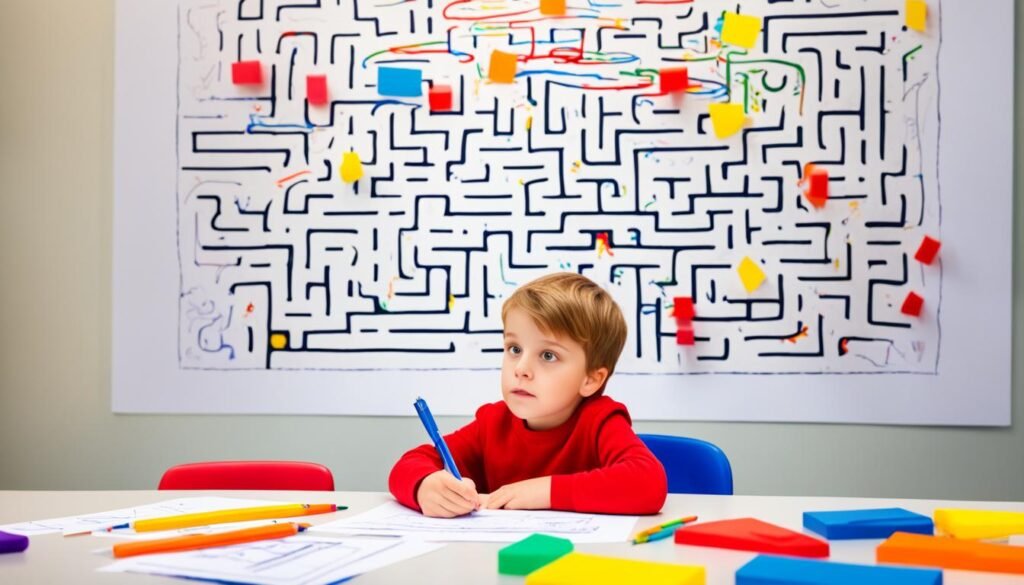
Understanding Creative Thinking Techniques
Exploring creative thinking opens a world where imagination grows. By developing these skills, I help children boost their creativity. Through different activities, we find richer solutions to problems, linking creativity with problem-solving.
Activities to Boost Creative Thinking
Engaging in creative activities lets children show their thoughts vividly. Here are some ideas:
- Brainstorming sessions: These are fun and enlightening, letting kids share their wild ideas.
- Storytelling: Making up stories sparks imagination, helping kids create new worlds and learn through stories.
- Problem-solving games: These games challenge kids and teach them to think creatively to overcome hurdles.
Implementing Creative Thinking in Daily Life
Adding creative thinking to everyday life makes learning more fun. Simple changes can have big effects:
- Try new hobbies or activities that catch their interest.
- Let children help make decisions, making them feel important.
- See challenges as chances to grow, showing that mistakes are learning moments.
Conclusion
Reflecting on how we help young minds grow, I see the key role of creative expression. It boosts their problem-solving skills and helps them grow emotionally and socially. By solving problems creatively, kids learn to face challenges with ease and confidence.
Creative problem-solving is crucial. When kids explore art, music, or play, they build a strong foundation for innovation. This helps them find solutions that might seem impossible otherwise.
We must make creativity a priority in our homes, schools, and communities. Doing so supports not just individual growth but also prepares a future full of innovators. This blend of creativity and problem-solving leads to a brighter future.
